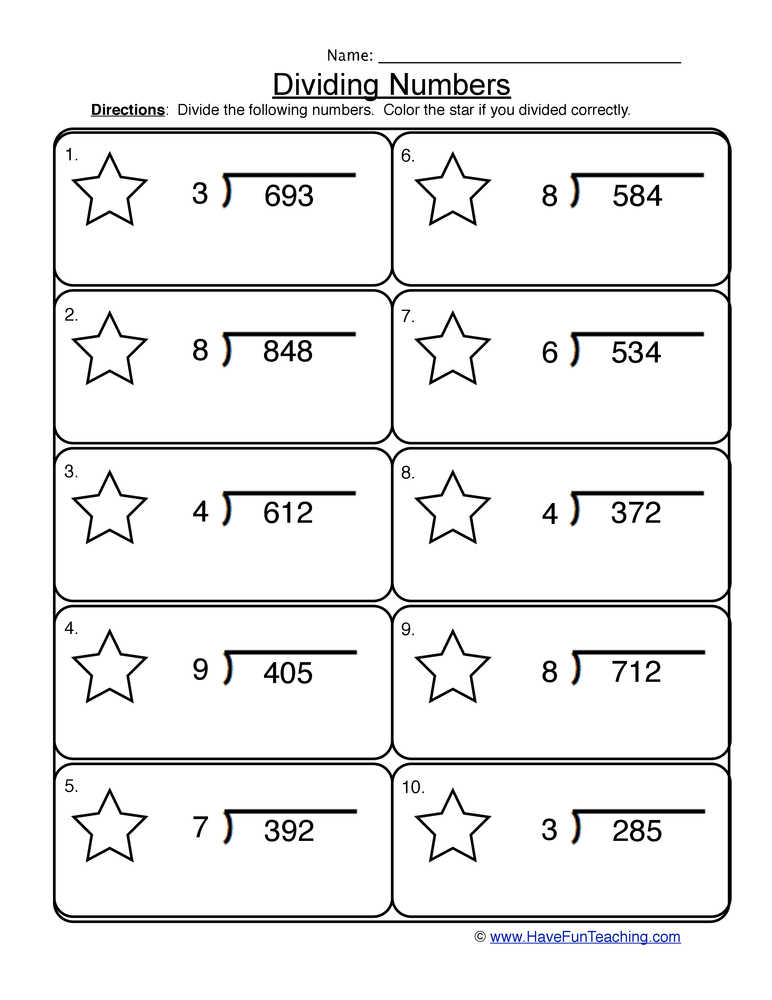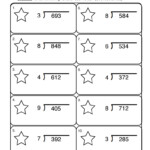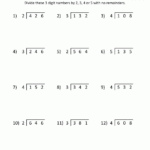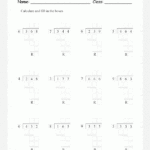3 Digit By 1 Digit Division With Remainders Worksheets – The most effective way to master math concepts is with worksheets for division. They are extremely helpful when preparing for exams in arithmetic. There are a variety of formats available for worksheets, including decimals as well as whole numbers.
entire numbers
A worksheet on division can help your child get an understanding of the basic idea of performing mathematical operations with whole numbers. These worksheets can be used to develop division skills and assist students to grasp the idea. The subject matter is illustrated in these worksheets with illustrations as well as actual examples.
There are many types of division worksheets. These include worksheets that have multiple digits, or long divisions. Students divide multi-digit integers using their divisors on worksheets designed for multi-digit division. They then calculate the quotient and the remainder. Long division worksheets follow the standard procedure.
Worksheets that divide whole numbers into fractions can be found along with worksheets that split numbers in traditional ways. This is a wonderful technique to increase the ability of students to think and make this topic second-nature.
Rule of Divisibility
Children are able to better understand the concept of divisibility using worksheets for division that contain divisibility rules. They assist children to learn and solve division problems. They also aid children in understanding and remembering information faster.
The children are asked to write the numbers that are divisible by the specific numbers on a worksheet that teaches divisibility rules. These worksheets help with the development of fine motor skills, making decisions and teaching the notion of division. They help kids track their education and find gaps in their knowledge.
To determine if a number can be divided into digits, you must divide it. To determine if a number is divisible by a given number, it has to be divided equally between its total numbers.
Fractional division
It’s effective to educate students about fractions through worksheets on splitting fractions. This is essential in helping students learn algebra in the later grades.
A lot of students struggle with fractional division on a daily basis. It’s difficult due to the fact that it can be so confusing. Use worksheets for fraction division to prevent confusion. These can be used by children to double check their answers. These worksheets are a great way to make students feel more at home in their classroom.
It is possible to use word problems, pictures or diagrams to aid you in splitting fractions. You can also practice writing fractions by mixing numbers with them. These worksheets can be adapted to a range of levels. They are intended for kids from 3 to 6 years old.
Decimal division
Dividing decimals and whole numbers is the same procedure. The only difference is that there’s no second division to divide decimals. When you divide a decimal the decimal point has to be moved to its right. It is possible to round up or down according to the digit that comes after the decimal point.
Before you can divide decimal numbers it is necessary to determine the quotient. A decimal quotient can be described as the sum of the divisor’s products and the dividend. It could be multiples of a single integer, multiples 10 or multiples 100.
A decimal percentage is typically reduced to a certain number of decimal points. The trailing zeros are employed to accomplish this. Divide 48.8 by 4, which is a decimal division, is due to the fact that the dividend is worth 0.4% and the divisor is worth 4.88.
For large numbers to divide, make use of powers of 10.
It is crucial to utilize powers of ten when you divide large numbers. It doesn’t matter whether you’re splitting decimal numbers , or whole numbers, it is important to know how to change the decimal points.
When dividing large numbers, it’s necessary to shift the decimal point as many times that there are zeros in power of ten. This means that the value is raised as the original number is reduced. When it is smaller, the decimal point moves to the right; when it’s larger, it will move to the left. If the number is smaller then one, the exponent will be decreased by the amount it moves.
Subtract the exponents from divisor from the exponents of the dividend. The scientific notation used for this step is





